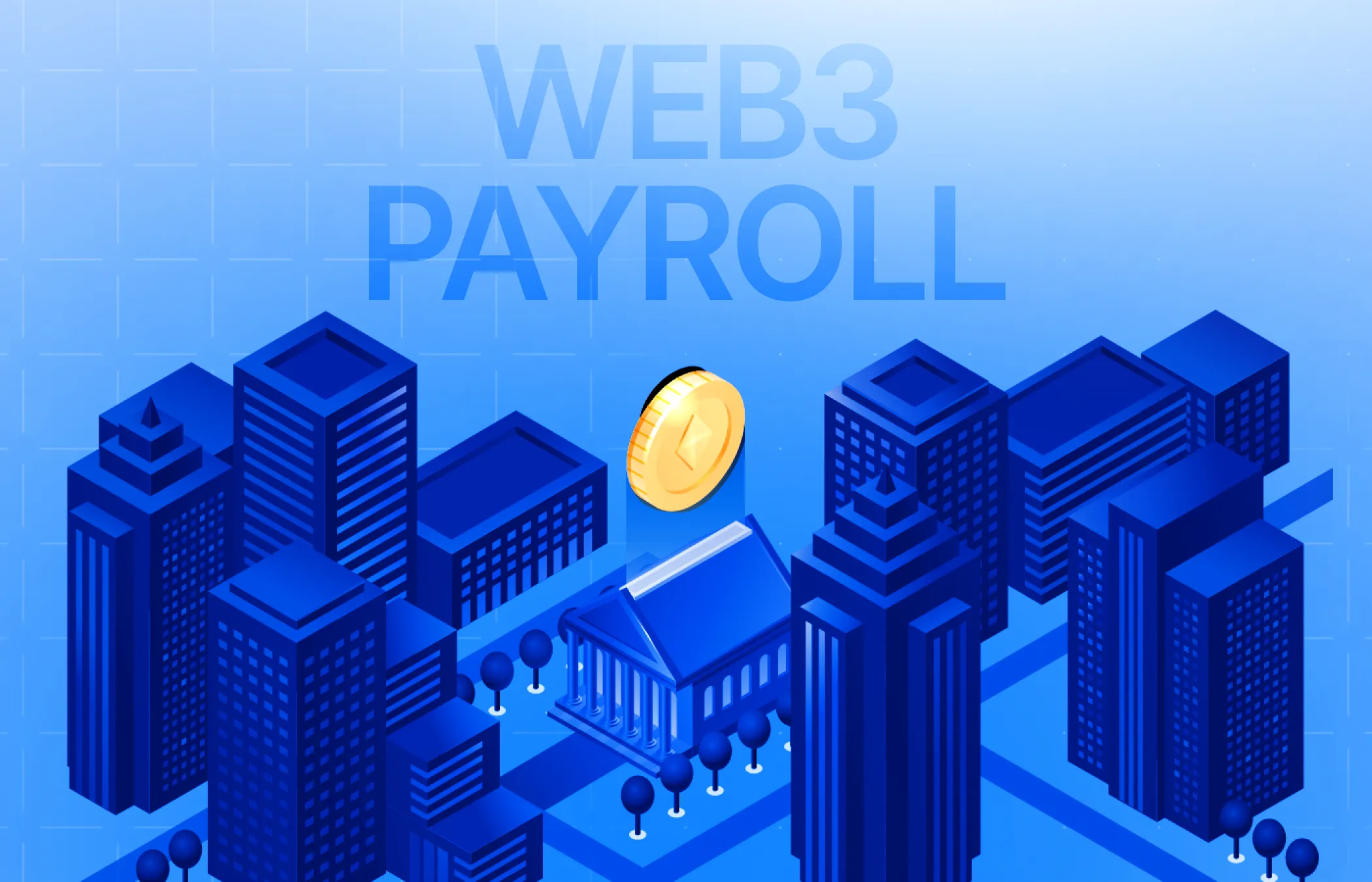
Stablecoins Explained: Powering Compliant Web3 Payroll
Understand stablecoins, their role in Web3 finance, and how they enable fast, compliant global payroll and token distributions.

.avif)
For Web3 founders, CFOs, and operations teams, stablecoins represent more than just a technical advancement — they are an operational tool enabling compliant payroll, cross-border compensation, and token distribution at scale.
At their core, stablecoins are digital assets designed to maintain a stable value, typically pegged to a fiat currency like the U.S. dollar. This stability makes them uniquely suited for financial operations that require predictability, transparency, and regulatory oversight — three pillars essential to sustainable Web3 growth.
Why Stablecoins Matter for Web3 Teams
Every Web3 organization eventually faces a complex challenge: how to compensate a distributed team or token community efficiently, legally, and transparently. Traditional banking systems are slow, fragmented, and often inaccessible in emerging regions where contributors, developers, or contractors reside. Meanwhile, crypto-native tokens introduce volatility, accounting complications, and compliance risks.
Stablecoins fill this gap by combining the efficiency of blockchain with the reliability of fiat-backed value. For example, a company can pay contributors in USDC or USDT without exposing them to the volatility of ETH or BTC — while maintaining full transaction transparency on-chain. When paired with a compliance-first partner, this model delivers both speed and trust.
A New Era of Financial Infrastructure
The rise of stablecoins signals a broader shift in how organizations think about money movement. Beyond trading or DeFi, stablecoins are powering an entirely new financial layer — one built for real-time payroll, global operations, and cross-border collaboration. Yet this innovation comes with a crucial caveat: compliance cannot be an afterthought.
As regulatory scrutiny increases, governments are formalizing frameworks for stablecoin issuers and users. From MiCA in the EU to the U.S. Treasury’s latest stablecoin guidelines, oversight is expanding rapidly. This makes it imperative for Web3 companies to implement transparent processes for KYC (Know Your Customer), AML (Anti-Money Laundering), and tax reporting when using stablecoins in payroll or token programs.
Toku’s Perspective: Enabling Compliance Without Complexity
At Toku, we’ve seen firsthand how stablecoins can unlock global scale — when implemented correctly. Whether it’s managing token grants, distributing payroll to contributors across 30+ countries, or ensuring every payment meets local tax requirements, stablecoins are a key part of the Web3 compliance stack.
However, the technology alone is not enough. Without robust infrastructure, audit-ready reporting, and jurisdiction-specific frameworks, stablecoin usage can quickly create risk rather than efficiency. That’s why forward-thinking teams combine blockchain efficiency with compliant execution — transforming what used to be a financial bottleneck into a strategic advantage.
What Are Stablecoins and How Do They Work?
Stablecoins are digital assets designed to minimize volatility — the same volatility that makes most cryptocurrencies difficult to use for day-to-day financial operations. Unlike Bitcoin or Ether, whose prices fluctuate with market sentiment, a stablecoin is typically pegged to a reserve asset such as the U.S. dollar, euro, or even gold.
This peg is maintained through various mechanisms:
- Fiat-backed reserves: Each token is backed 1:1 by real currency held in audited bank accounts.
- Crypto-collateralized models: Users deposit volatile crypto assets into smart contracts that over-collateralize the issued stablecoins.
- Algorithmic mechanisms: Supply and demand algorithms expand or contract the token supply to maintain its target value.
The goal in all three cases is the same — provide price stability without sacrificing the speed, transparency, and programmability that blockchain enables.
In practice, a stablecoin combines the best of both worlds: the regulatory familiarity of fiat currency and the efficiency of decentralized technology. When transferred, it settles almost instantly across borders, without the cost or friction of traditional bank intermediaries.
Why “Stable” Doesn’t Mean “Simple”
Despite their apparent simplicity, stablecoins operate within a complex ecosystem of smart contracts, liquidity pools, and custody solutions. For finance teams, this complexity translates into compliance obligations — ensuring that every transaction is traceable, lawful, and properly accounted for.
That’s why understanding how stablecoins maintain their peg and who is responsible for reserves is critical. A failure in transparency, as seen in early algorithmic models, can create systemic risk. Today’s compliant-first Web3 companies prioritize audited stablecoins like USDC and EURC that meet institutional standards.
The Evolution of Stablecoins — From Concept to Global Utility
The concept of a “digital dollar” isn’t new. But the execution has evolved significantly since the first stablecoins appeared around 2014.
- Early Era (2014–2018): Projects like Tether (USDT) introduced the idea of a fiat-backed token for crypto traders seeking a safe haven during volatility. Transparency was limited, but the use case — stability within crypto markets — was compelling.
- Institutional Maturity (2018–2020): USDC, launched by Circle and Coinbase, brought auditability, clearer reserve management, and adherence to regulatory standards. This era marked the beginning of stablecoins as legitimate financial instruments.
- Regulatory Alignment (2020–Present): Governments began drafting frameworks to supervise stablecoin issuance, custody, and transaction reporting. The European Union’s MiCA regulation and Japan’s stablecoin laws are two leading examples.
From Trading to Real-World Utility
Today, stablecoins are used far beyond trading pairs. Enterprises use them for:
- Cross-border B2B payments to suppliers and contractors.
- Payroll and token compensation for distributed teams.
- Treasury diversification to reduce FX exposure.
- DeFi yield management and liquidity provisioning.
Stablecoins are no longer an experiment; they’re becoming a foundation of Web3 finance.
Types of Stablecoins and Their Mechanisms
Not all stablecoins are created equal. Understanding their categories helps organizations choose the right one for payroll and treasury operations.
1. Fiat-Backed Stablecoins (Centralized)
- Examples: USDC, USDT, EURC, PYUSD
- Backed 1:1 by fiat reserves held by licensed custodians.
- Regularly audited for transparency.
- Best suited for compliance-critical use cases like payroll and taxation.
Advantages: predictable value, easy accounting, and regulatory clarity.
Risks: dependence on centralized entities and banking infrastructure.
2. Crypto-Collateralized Stablecoins (Decentralized)
- Example: DAI (backed by over-collateralized crypto reserves).
- Smart contracts ensure every issued DAI is backed by crypto worth more than $1.
- Transparent, but subject to collateral volatility.
Advantages: censorship resistance, transparency.
Risks: liquidation events during sharp market downturns.
3. Algorithmic Stablecoins (Experimental)
- Peg maintained algorithmically — no physical collateral.
- Examples: UST (now defunct) showed systemic fragility.
Advantages: capital efficiency.
Risks: historically unstable; not recommended for payroll or compliance-sensitive use cases.
For Web3 companies handling employee or contractor payments, fiat-backed stablecoins remain the gold standard due to their predictability and regulatory compatibility.
Real-World Use Cases Across Industries
Stablecoins are reshaping how global businesses move money. Let’s look at where they’re making the biggest impact.
1. Web3 Payroll and Compensation
DAO treasuries and blockchain startups use stablecoins to pay contributors, developers, and advisors across dozens of jurisdictions. Instead of navigating local banking systems, stablecoins enable instant, low-fee transactions while preserving an immutable on-chain audit trail.
2. Global Vendor and Contractor Payments
Companies can now pay international partners in minutes rather than days, avoiding traditional banking delays and foreign exchange markups.
3. Token Grants and Incentives
Projects distributing governance or utility tokens can pair stablecoin grants to hedge volatility — ensuring fair, consistent value delivery to recipients.
4. Treasury Diversification
Holding a portion of reserves in stablecoins allows companies to interact with DeFi protocols safely, while maintaining liquidity for operational expenses.
5. Financial Inclusion
Freelancers in regions with unstable banking systems can receive payments directly in stablecoins, bypassing infrastructure barriers.
In short: Stablecoins are not just for traders. They’re becoming the backbone of a transparent, programmable, and inclusive financial ecosystem.
The Compliance Challenge — KYC, AML, and Tax Considerations
The promise of stablecoins — speed, transparency, and efficiency — must always align with the realities of financial regulation.
For Web3 organizations, compliance obligations arise at multiple levels:
- KYC (Know Your Customer): Identifying and verifying recipients to prevent fraud.
- AML (Anti-Money Laundering): Screening transactions and counterparties for suspicious activity.
- Tax Reporting: Recording every distribution and exchange to ensure correct income classification.
- Employment Classification: Distinguishing between payroll, grants, and contractor payments for correct legal treatment.
Navigating a Global Regulatory Patchwork
Each jurisdiction has its own definition of what constitutes a “digital asset,” “payment token,” or “electronic money.”
- In Singapore, stablecoins fall under the Monetary Authority’s licensing regime.
- In the U.S., they may trigger securities or money transmission rules.
- The EU’s MiCA framework formalizes categories such as e-money tokens and asset-referenced tokens, setting new issuer requirements.
Web3 finance teams must track these evolving standards to avoid costly misclassifications.
Stablecoin Payroll and Token Grants — A Compliance-First Approach
Using stablecoins for payroll introduces both opportunities and risks. While the speed and efficiency are unmatched, organizations must integrate them within compliant frameworks.
Here’s what a compliance-first stablecoin payroll workflow typically involves:
- Entity Setup: The organization must have legal entities or compliant intermediaries capable of executing payments in each jurisdiction.
- KYC & Worker Verification: Recipients are verified to ensure they are legitimate employees or contractors.
- Payroll Classification: Payments are categorized correctly for tax and labor law purposes.
- Reporting & Tax Filings: Each transaction is recorded, converted into fiat for accounting, and reported to local authorities as required.
- Audit Trail Creation: On-chain records are reconciled with financial statements for transparency.
When executed properly, stablecoin payroll offers:
- Near-instant settlement across borders
- Cost savings on FX and wire transfers
- Transparency for both employer and employee
- Simplified reconciliation and reporting
However, failure to meet compliance obligations can result in penalties or reputational damage.
How Toku Simplifies Stablecoin Adoption for Web3 Organizations
Toku enables Web3 companies to leverage stablecoin payments without the regulatory headaches.
1. Global Compliance Infrastructure
Toku’s platform handles the complexity of employment classification, payroll taxes, and cross-border legal requirements. Each payment — whether in fiat or stablecoins — is executed through compliant entities aligned with local labor and tax laws.
2. Integrated Stablecoin Support
Toku’s systems are designed to manage multi-currency payments, allowing Web3 companies to compensate global teams in both fiat and compliant stablecoins such as USDC, USDT, or EURC.
3. Full-Cycle Token Grant Administration
From vesting schedules to jurisdictional tax withholding, Toku manages every step of token distribution. This ensures that token-based compensation programs remain legally sound and audit-ready.
4. KYC, AML, and Tax Reporting at Scale
Toku’s automated verification ensures every recipient is KYC-compliant. Each payment is traceable, logged, and available for audit — providing the transparency regulators demand.
5. Seamless Integration with Treasury Operations
Finance teams can plug Toku into their existing wallets and treasury management systems, enabling streamlined reconciliation and simplified reporting.
Toku bridges innovation and regulation — empowering Web3 organizations to scale globally while staying fully compliant.
The Future of Stablecoins — Regulation, Innovation, and Global Scale
The next phase of stablecoin adoption will be defined by collaboration between builders and regulators.
Key trends shaping that future include:
1. Institutional Adoption
Major payment networks are integrating stablecoins into settlement layers, making blockchain-based transactions as seamless as credit card payments.
2. On-Chain Compliance Tools
RegTech and blockchain analytics platforms are embedding real-time KYC/AML screening directly into smart contracts, automating risk management.
3. Central Bank Digital Currencies (CBDCs)
While not identical to stablecoins, CBDCs share infrastructure similarities and could eventually coexist, bridging the gap between public and private digital money.
4. Programmable Payments
Smart contracts enable conditional, milestone-based disbursements — ideal for grants, token vesting, or contractor agreements.
5. Standardization and Legal Clarity
Global frameworks like MiCA and Japan’s Payment Services Act are paving the way for stablecoin regulation that fosters both innovation and accountability.
The overarching theme is trust — stablecoins are earning their place as a legitimate financial instrument, not a speculative asset.
Building Trust and Transparency in the Stablecoin Era
Stablecoins are no longer a niche innovation. They’re a cornerstone of modern digital finance — enabling transparent, fast, and compliant payments across borders.
For Web3 founders and finance teams, understanding their mechanics, risks, and regulatory requirements is essential to building sustainable operations. But technology alone doesn’t guarantee compliance. True success lies in pairing innovation with robust governance.
Toku helps organizations achieve exactly that — bridging blockchain’s potential with the frameworks regulators trust. From token grants to payroll execution, Toku ensures every transaction is compliant, auditable, and globally scalable.
👉 Learn how Toku simplifies compliant stablecoin payroll for your organization. Chat with Toku today!







